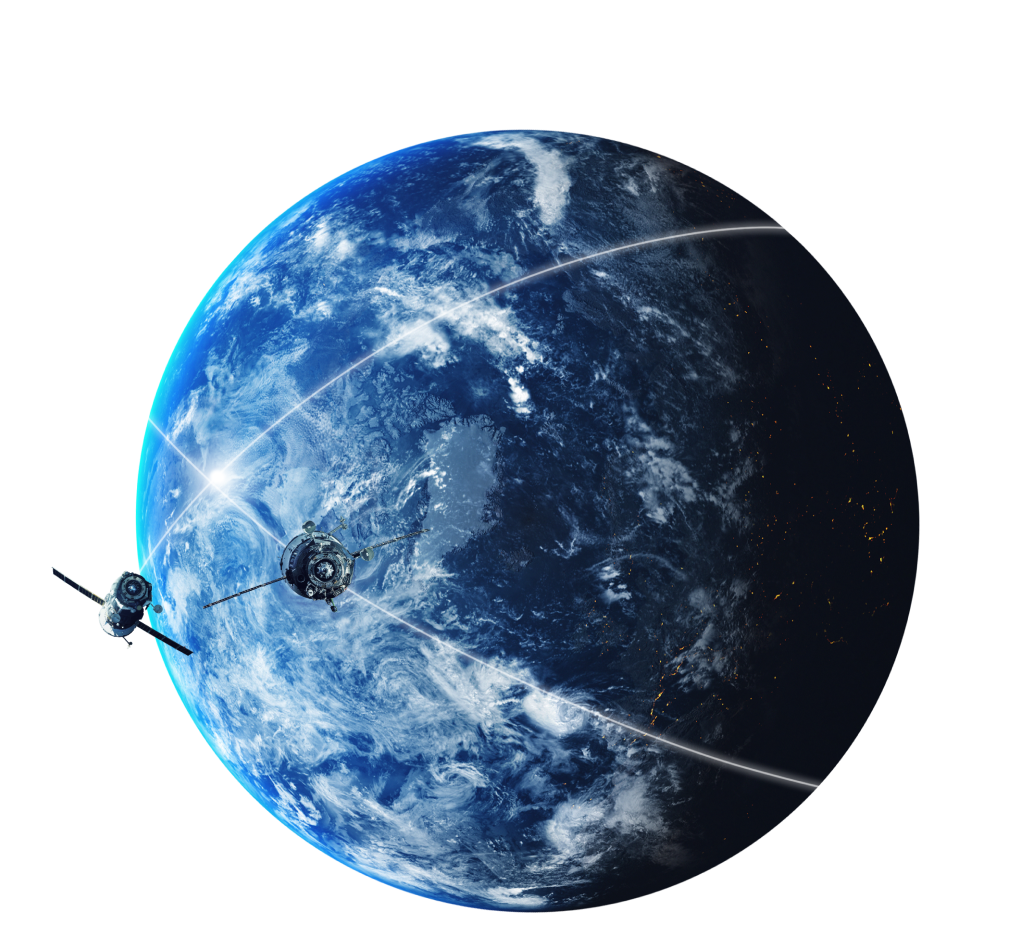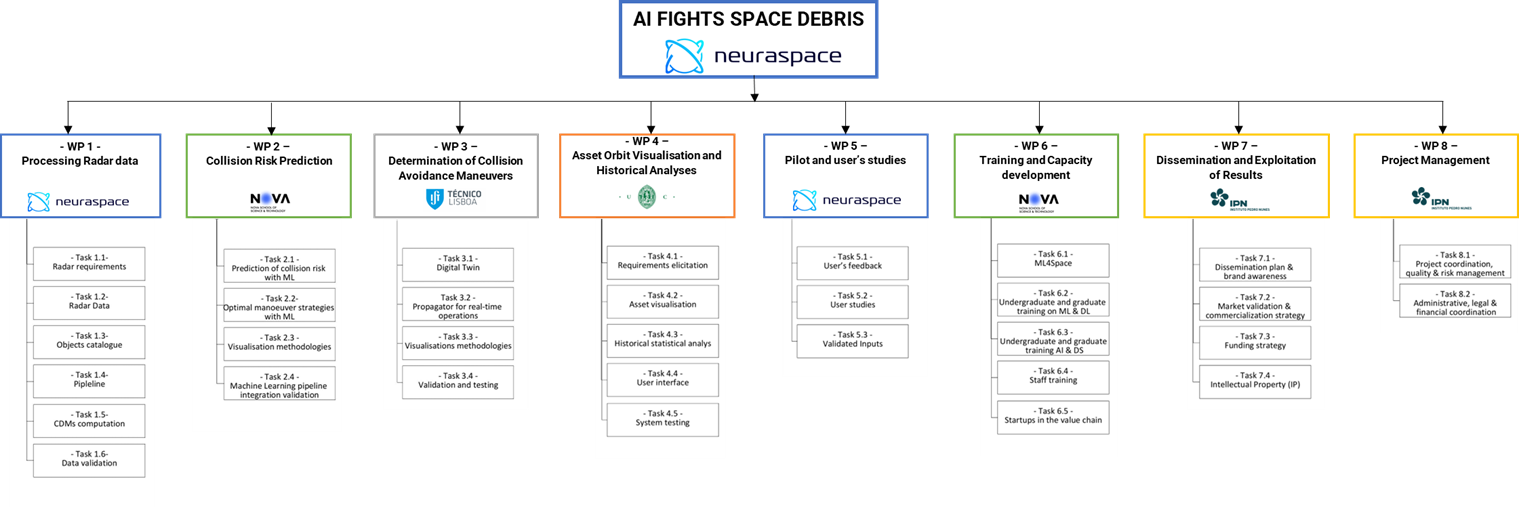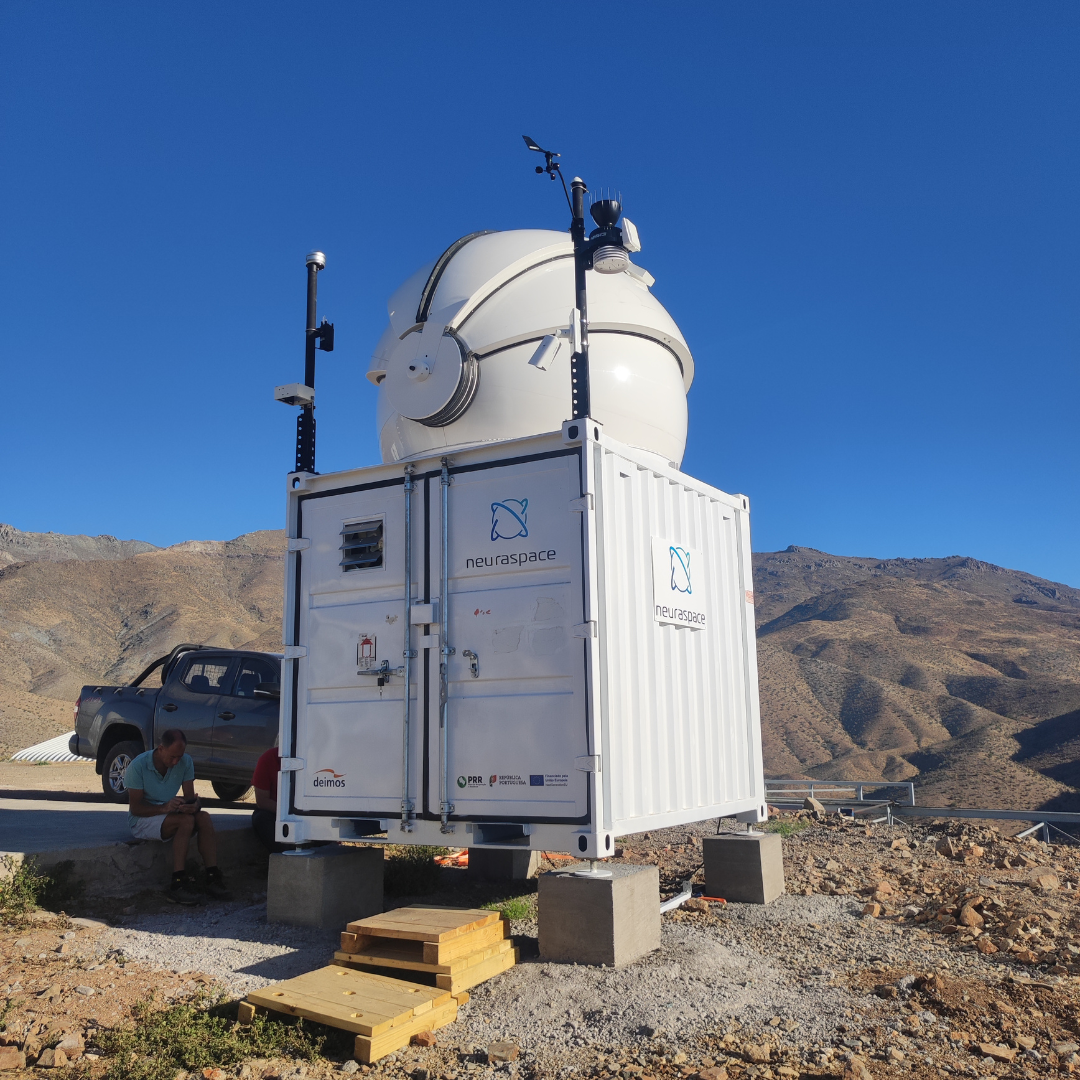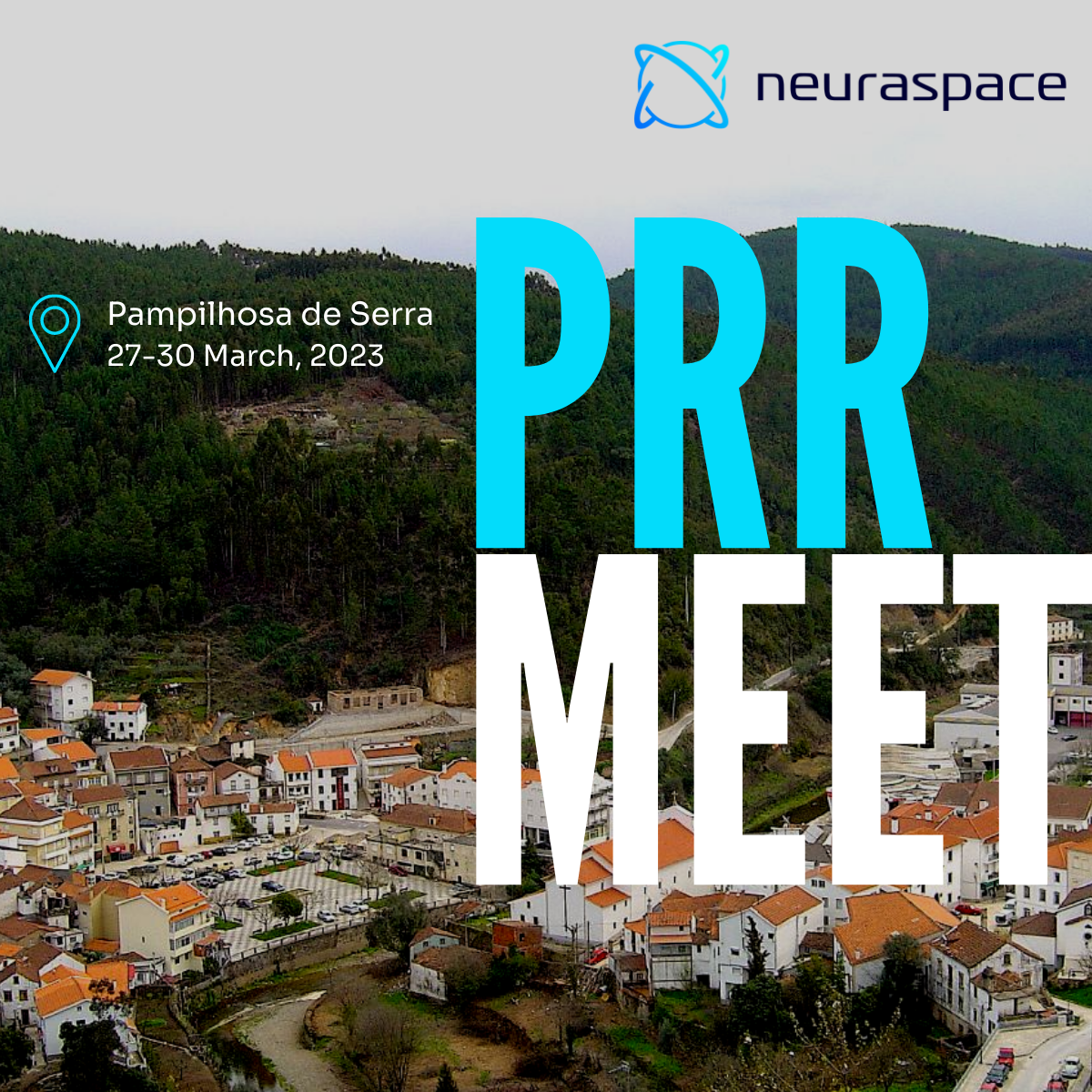Neuraspace AI Fights Space Debris Project - Transforming Space Operations
-
Reduce false alerts, avoiding unnecessary manoeuvres and saving up to €25,000 per manoeuvre
-
Improve manoeuvre decisions, lowering risk, saving fuel, extending satellite lifespan, and enabling constraint- and priority-based manoeuvres
-
Reduce staff time required for operations through AI automation
Project Facts
Neuraspace AI Fights Space Debris
Project code: C626449889-00463050
Type of Operation: Agendas/Alianças mobilizadoras para reindustrialização
Operation code: 2022-C05i0101-02
Intervention region: Centro, Alentejo e Açores
Lead promoter: Neuraspace
Co-promoters: Instituto Superior Técnico, IST-ID, Associação do Instituto Superior Técnico para a Investigação e o Desenvolvimento; Universidade Nova de Lisboa - Faculdade de Ciência e Tecnologia; Universidade de Coimbra; Instituto Pedro Nunes-Associação para a Inovação e Desenvolvimento em Ciência e Tecnologia; GMVIS Skysoft, S.A.
Approval date: 13/04/2022
Start date: 01/05/2022
Date of the conclusion: 31/12/2026
Total eligible investment: 18 767 118€
Funding program: Plano de Recuperação e Resiliência (PRR)

Celebrating 5 Years & 500 Satellites Milestones
Last week, Neuraspace celebrated its 5th anniversary. The company looks back at a five-year journey to become a European leader for space traffic management (STM) with a global footprint in space domain awareness (SDA).
Launch of second optical telescope in Chile for global satellite tracking coverage
Neuraspace has installed and activated its second optical telescope, located in Chile, to expand satellite tracking coverage over the southern hemisphere
Launch of first operational telescope in Beja
The optical telescope is installed at Air Base No. 11 in Beja as part of a nascent collaboration with the Portuguese Air Force.
First Event at Pampilhosa da Serra
March 27-30 marks the first event launched under the PRR project.
Project Structure
The products that will be developed over the course of the PRR project are focused on a unique AI/ML solution that tracks satellites, detects potential collisions and fights space debris. The project is divided in five Product, Process and Services (PPS); the work performed from PSS#1 to PSS#4 pertains to the Neuraspace platform, whilst PSS#5 is complementary to the platform and encompasses the entire body of knowledge related to Space Traffic Management generated over the course of this PRR project.
PPS1: Neuraspace Sensor and Events Catalogue
What: Tracks space objects and keeps track of the possible near encounter by creating Collision Data Message
Why: Increases planning margin as alerts come earlier. Generates savings, as better predictions reduce the need of staff allocated to the tasks (false alerts reduction). Having an end-to-end service that tracks objects with radars and verifies their safety regarding close encounters is essential to obtain a competitive advantage in this market.
PPS2: Neuraspace AI Risk Predictor
What: Receives Collision Data Messages of a client’s asset(s) and provides a complete analysis and visualisation of the encounter.
Why: More informed decisions reduce risk and allows savings by avoiding unnecessary manoeuvres (one emergency manoeuvre for a single satellite in LEO can cost around 25 k€).
PPS3: Neuraspace AI Risk Mitigator
What: Suggests the best possible manoeuvres according to technical and business criteria.
Why: Less staff/less time involved in the decisions (operation cost savings) and AI supporting the team to take better decisions.
PPS4: Resident Space Objects Visualisation Tool
What: User-friendly interface that allows to easily visualise the positioning of the space objects as well as close encounter predictions.
Why: Complex decision making requires easily accessible information with the help of better tools for asset visualisation, allowing quicker and more informed decisions at all levels of the organisation.
PPS5: Space Traffic Management Body of Knowledge
What: State of the art knowledge in Space Traffic Management (STM) through the specialized courses, research papers, master thesis, executive training, and support to start-ups.
Why: Transversal PSS producing knowledge for the others PSS and the STM value chain.
These products will be developed over 36 months by the consortium composed of Neuraspace as leader, IST, UNL-FCT, UC, IPN and GMV, all with expertise in key areas for the successful execution of the project.
The project follows the work breakdown structure presented in Figure 1, where it is possible to see the division of works by the consortium, contemplating all the products (PSS) previously presented.

-2.png)
Neuraspace AI Fights Space Debris
Leading the way for Space Domain Awareness, AI and Safety



